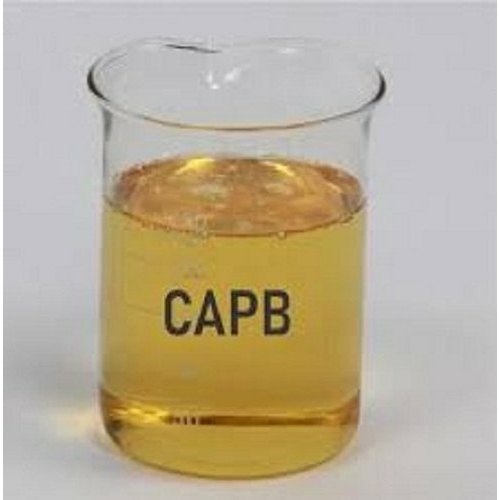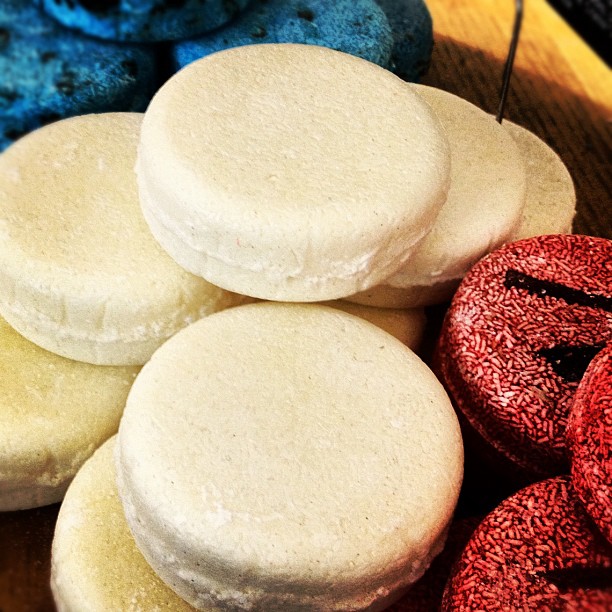What is CAPB?
CAPB is a mixture of non-irritating amphoteric compounds naturally derived from coconut oil that are used as foam boosters, detergents, and surfactants in skin and hair care products. The International Nomenclature Cosmetics Ingredient name for it is cocamidopropyl betaine, even though it is not made directly from betaine (a zwitterionic compound first found in beets).
Introduction to CAPB – Cocamidopropyl Betaine
CAPB is a mixture of non-irritating amphoteric compounds naturally derived from
coconut oil that are used as foam boosters, detergents, and surfactants in skin and hair care
products. The International Nomenclature Cosmetics Ingredient name for it is cocamidopropyl
betaine, even though it is not made directly from betaine (a zwitterionic compound first found in
beets).
Molecular Structure of CAPB – Cocamidopropyl Betaine
CAPB is an amphoteric molecule, meaning it has atoms with positive and negative
charges. Under IUPAC (International Union of Pure and Applied Chemistry) nomenclature,
CAPB is known as 2-[3-(dodecanoylamino)propyl-dimethylazaniumyl]acetate. The first part,
dodecanoyl amino, indicates that the primary carbon chain is twenty carbons long and contains
an amino (NH2 ) group at the third carbon. Propyl and dimethyl indicate a total of three branching
carbon chains. One of these is three carbons long and the other two are only one carbon long.
Azaniumyl shows the presence of an azanium (common name ammonium) group. Azanium has a
plus one cationic (positive) charge. Acetate means that the compound contains a carboxyl
functional group. These have a minus one anionic or negative charge and consist of two oxygens,
one of which is double bonded, that are attached to a carbon. In acids, CAPB is positively
charged while in bases it has a negative charge. This makes it a zwitterionic substance – one that
has both types of charges. As a result, it is compatible with cationic, anionic, amphoteric, and
non-ionic substances.
Physical Properties of CAPB – Cocamidopropyl Betaine
CAPB is available for purchase as a viscous liquid. It boils at 100º C (212º F), the same
as water. It freezes at -10º C (14º F), below the temperature of water. It also has a pour point of
-5º C (23º F). At -3º C (27º F), it clouds or becomes opaque as the ingredient falls out of the
solution (no longer becomes soluble). A pour point is the minimum temperature required for a
substance to flow. The pH range for CAPB is 5.0 to 7.0. This is safe for human skin, which is
naturally acidic and has a pH of 4.7 to 5.4. Products above or below this range can be irritating
and damaging to the skin. It is easily soluble in water at up to 100 g/L in a wide pH range.
However, it remains insoluble in oils and organic solvents unless heated or stirred. Colors for
this substance range from pale yellow to golden to dark orange, but it can still be used in clear or
transparent formulations. Like most surfactants, it gives off a characteristic soapy or detergenty
odor that is not noticeable in final products. It is slightly more dense than water with a density of
1.04 g/cm3 and will sink if not dissolved.
Usage of CAPB – Cocamidopropyl Betaine
CAPB is used to add foam to products, as a surfactant, and as a detergent. Surfactants are
compounds that are both lipophilic (oil-loving) and hydrophilic (water-loving). The combination
of these two properties is what enables it to remove dirt from the hair and skin.
It is normally used at a rate of four to forty percent in the final products. In a given
amount of CAPB, only about 30% is active. The remaining 70% is water. Leave-on products
should not contain more than three percent CAPB as more than that can cause irritation.
It is usually added as a secondary surfactant and lather booster, as it is too weak on its
own to clean adult skin and hair. Add it in the heated water phase or the cooldown phase. It can
be used in transparent and clear products without making them opaque. In some products, it can
be added to increase viscosity. When positively charged or in a negative solution, it becomessubstantive. This makes it excellent in conditioners and also helps it serve as an antistatic agent
to prevent frizzing. In lower concentrations, it can be used in non-rinse products like micellar
water or makeup remover.
Manufacturing of CAPB – Cocamidopropyl Betaine
CAPB is a natural compound made from coconut oil. It is also vegan as it does not
contain any animal-based products. It is also GMO free and contains no preservatives. In the first
step, DMAPA (dimethylaminopropylamine) is combined with lauric acids and fatty acids found
in coconut oil to form an amide (cocamidopropyl dimethylamine). In the second step, sodium
monochloroacetic acid is added to create an ammonium center with a positive charge, finishing
the molecular changes. Lastly, the impurities are removed and water is added to create the final
product in its liquid form.
Substitution to CAPB – Cocamidopropyl Betaine
There are few amphoteric surfactants available, so substitutions are tricky. One
alternative is coco betaine, though this is often just relabled CAPB. However, it is not as gentle,
so be sure to check the INCI, which can sometimes differ from the product name and label.
Storage CAPB – Cocamidopropyl Betaine
CAPB should be stored in a cool, dry, and dark area in a tightly sealed container. If stored
properly, it will keep for up to one and a half years. Keep away from direct sunlight and strong
oxidizing agents, as it may react with them. High heat and freezing temperatures may also cause
problems.
Safety from CAPB – Cocamidopropyl Betaine
CAPB is a strong eye irritant. If it gets in the eyes, remove contacts or glasses and flush
with water for fifteen minutes. In the event that irritation persists, seek medical attention. CAPBis not meant for internal use. If a large amount of CAPB is ingested, do not induce vomiting. Call
your poison control center immediately to see what you should do. Inhalation of vapors or mist
may cause respiratory irritation. It does not irritate skin, but some studies suggest that it may be
an allergen. If left on skin for a long period of time, it may cause irritation. As such, it should not
be used in any products that are meant to be left on the skin and not rinsed off. Do not release
into the environment as it is toxic to aquatic life. Remember to always read the MSDS
(manufacturer’s safety data sheet) before working with a chemical you are unfamiliar with.



No Comments